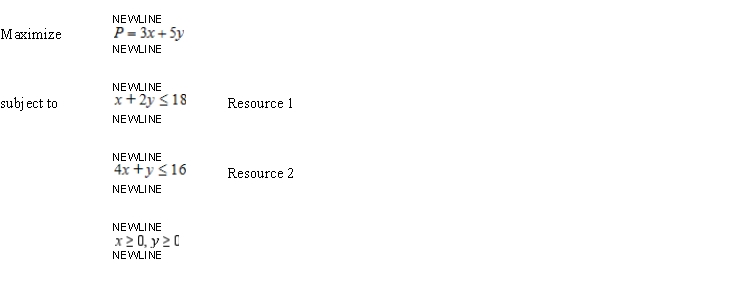Multiple Choice
Use the method of corners to solve the problem. Find the range of values that the coefficient of x can assume without changing the optimal solution.
Find the range of values that resource 1 can assume.
Find the shadow price for resource 1.
Identify the binding and nonbinding constraints. 
A) x = 2, y = 8, P = 20 


Constraint 1 is binding; constraint 2 is nonbinding.
B) x = 2, y = 8, P = 46 

 Both constraints are binding.
Both constraints are binding.
C) x = 2, y = 2, P = 46 

 Both constraints are binding.
Both constraints are binding.
D) x = 8, y = 2, P = 46 

 Both constraints are binding.
Both constraints are binding.
Correct Answer:

Verified
Correct Answer:
Verified
Q148: Find the graphical solution of the inequality.
Q149: Formulate but do not solve the following
Q150: Soundex produces two models of clock radios.
Q151: Perth Mining Company operates two mines for
Q152: Determine graphically the solution set for the
Q154: Write a system of linear inequalities that
Q155: A farmer plans to plant two crops,
Q156: Determine graphically the solution set for the
Q157: Write a system of linear inequalities that
Q158: Find the optimal (maximum and/or minimum) value(s)